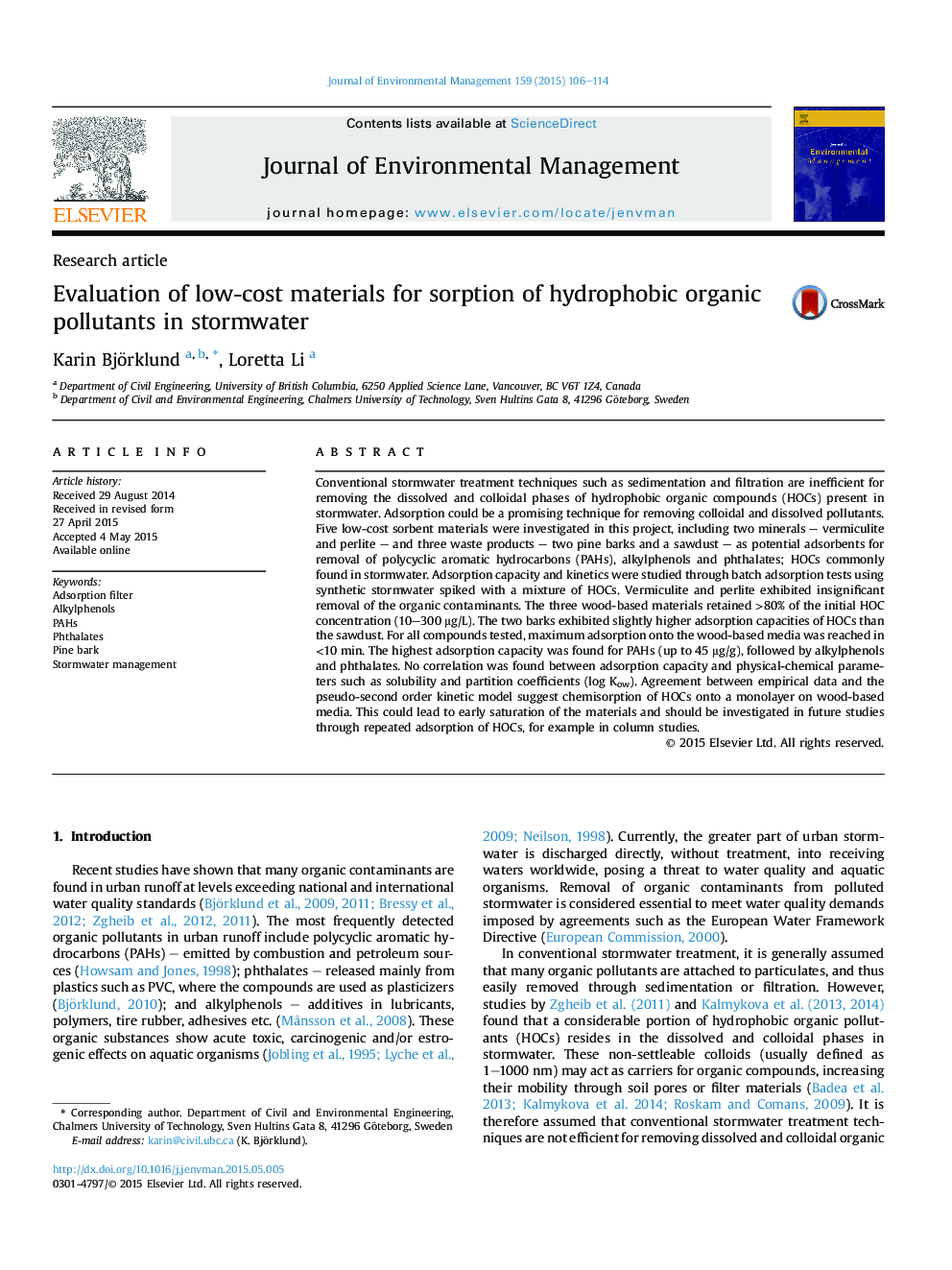| Article ID | Journal | Published Year | Pages | File Type |
|---|---|---|---|---|
| 7481970 | Journal of Environmental Management | 2015 | 9 Pages |
Abstract
Conventional stormwater treatment techniques such as sedimentation and filtration are inefficient for removing the dissolved and colloidal phases of hydrophobic organic compounds (HOCs) present in stormwater. Adsorption could be a promising technique for removing colloidal and dissolved pollutants. Five low-cost sorbent materials were investigated in this project, including two minerals - vermiculite and perlite - and three waste products - two pine barks and a sawdust - as potential adsorbents for removal of polycyclic aromatic hydrocarbons (PAHs), alkylphenols and phthalates; HOCs commonly found in stormwater. Adsorption capacity and kinetics were studied through batch adsorption tests using synthetic stormwater spiked with a mixture of HOCs. Vermiculite and perlite exhibited insignificant removal of the organic contaminants. The three wood-based materials retained >80% of the initial HOC concentration (10-300 μg/L). The two barks exhibited slightly higher adsorption capacities of HOCs than the sawdust. For all compounds tested, maximum adsorption onto the wood-based media was reached in <10 min. The highest adsorption capacity was found for PAHs (up to 45 μg/g), followed by alkylphenols and phthalates. No correlation was found between adsorption capacity and physical-chemical parameters such as solubility and partition coefficients (log Kow). Agreement between empirical data and the pseudo-second order kinetic model suggest chemisorption of HOCs onto a monolayer on wood-based media. This could lead to early saturation of the materials and should be investigated in future studies through repeated adsorption of HOCs, for example in column studies.
Related Topics
Physical Sciences and Engineering
Energy
Renewable Energy, Sustainability and the Environment
Authors
Karin Björklund, Loretta Li,
